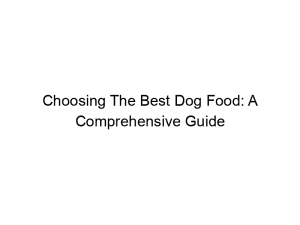Understanding your dog’s body language is crucial for building a strong bond and ensuring their well-being. Understanding Your Dog’s Body Language: What They’re Trying to Tell You isn’t just about cute tail wags; it’s about deciphering subtle cues that reveal their emotions, needs, and intentions. This comprehensive guide will equip you with the knowledge to interpret your dog’s signals, from playful bounces to anxious postures, fostering better communication and a happier, healthier relationship. You’ll learn to identify key indicators, understand common canine behaviors, and even anticipate potential problems. Let’s dive into the fascinating world of canine communication!
Understanding your dog’s body language is paramount for several reasons. Misinterpreting canine signals can lead to accidental injuries, strained relationships, and behavioral issues. By recognizing your dog’s communication style, you can better
respond to their needs, prevent unwanted behaviors, and foster a stronger bond based on mutual understanding and respect. This understanding is crucial for responsible dog ownership, whether you’re dealing with a playful puppy or a seasoned senior.
Recognizing Key Indicators: Posture and Position
Interpreting postures: a visual guide
A dog’s posture speaks volumes. A relaxed dog will typically have a loose, slightly curved body, a relaxed tail, and soft eyes. Conversely, a tense dog might exhibit a rigid posture, a tucked tail, and narrowed eyes. These subtle differences can indicate a range of emotions, from fear and anxiety to aggression and playfulness. Learning to differentiate these postures is essential for interpreting your dog’s overall mood.
The Power of the Tail: Decoding Tail Wags
More than just happiness: Understanding the nuances
While a wagging tail is often associated with happiness, the speed, height, and stiffness of the wag can convey different meanings. A fast, high wag might indicate excitement, while a slow, low wag could suggest uncertainty or apprehension. A stiff, rapidly wagging tail combined with tense posture might even indicate aggression. Context is crucial in interpreting tail wags – observe the overall body language for a more accurate reading.
Facial Expressions: Reading the Eyes and Mouth
The eyes have it: Deciphering subtle expressions
A dog’s eyes can reveal a wealth of information. Wide, dilated pupils might indicate fear or excitement, while narrowed eyes could suggest aggression or discomfort. The position of their ears also plays a significant role. Ears pricked forward often indicate alertness, while flat ears might signify fear or submission. A whale eye (showing the whites of their eyes) is a clear sign of discomfort or stress. Observing these facial cues helps paint a complete picture of your dog’s emotional state.
Vocalizations: Barks, Growls, and Whines
Understanding the canine vocal range
Dogs communicate through a wide variety of vocalizations. A playful bark is quite different from an aggressive growl or a distressed whine. The pitch, intensity, and frequency of these sounds provide crucial clues to your dog’s emotional state. For example, a high-pitched whine might signal anxiety or pain, while a low growl often indicates aggression or territoriality. Consider the context – a growl directed at an intruder is different from a playful growl during a game.
Body Language in Specific Contexts: Play, Fear, and Aggression
Playful interactions: how to identify them
Playful behavior typically involves a loose, bouncy posture, a wagging tail, and relaxed facial expressions. Dogs engaged in play often bow, inviting the other dog (or person) to join in. Their mouth may be slightly open, showing loose teeth in a non-threatening way. However, it’s important to distinguish playful aggression from real aggression. Pay close attention to their body language – if any signs of tension emerge, redirect the interaction.
Identifying Fear and Anxiety in Your Dog
Recognizing signs of a scared pup
Fearful dogs often exhibit signs of appeasement, such as yawning, lip licking, and avoiding eye contact. Their body might be tense and hunched, and their tail tucked low. They may try to escape the situation or show signs of stress, like excessive panting or trembling. Understanding these signs allows you to create a safe and comfortable environment for your dog and prevent escalation.
Understanding Aggressive Behavior
Deciphering the signs of canine aggression
Aggressive behavior can manifest in many ways, from growling and snapping to biting. Aggressive dogs often exhibit a stiff, rigid posture, direct eye contact, raised hackles (fur standing on end), and bared teeth. Their tail might be stiff and high, or tucked low depending on the type of aggression. Understanding the triggers for aggression is key to managing the behavior. Consult a professional dog trainer or veterinarian if you’re concerned about your dog’s aggression.
Calming Signals: How Dogs Try to De-escalate Situations
Appeasement behaviors: understanding canine communication
Dogs use calming signals to try and de-escalate tense situations. These include yawning, lip licking, turning their head away, and offering a submissive posture. Recognizing these signals can help you modify your behavior and prevent unwanted escalation. For example, if your dog shows signs of stress during a meeting with a stranger, give them space and avoid forcing interaction.
Interpreting Your Dog’s Body Language in Different Settings
Context is key: body language varies in different environments
The context in which you observe your dog’s body language is incredibly important. A dog who’s relaxed at home might be anxious at the vet’s office. Consider the environment, surrounding stimuli, and your dog’s past experiences when interpreting their signals. A dog who’s normally playful might exhibit submissive behavior if they feel threatened in an unfamiliar environment.
Improving Communication with Your Canine Companion
Building a better bond through understanding
By understanding your dog’s body language, you can build a stronger, more trusting relationship. Be patient and observant, taking the time to learn your dog’s individual cues. Respond appropriately to their signals, providing comfort when they are scared or anxious, and respecting their boundaries when they need space. Consistent positive reinforcement will strengthen your bond and create a harmonious relationship.
Common Misinterpretations of Dog Body Language
Avoiding miscommunication
Many human actions can be misinterpreted by dogs, leading to unwanted behaviors. Direct eye contact, for example, can be seen as a challenge by some dogs, while reaching over them can feel threatening. Understanding common misinterpretations helps avoid unintentionally triggering fear or aggression in your dog. Learn about canine etiquette to ensure clear and respectful communication.
Resources for Further Learning
Books, websites, and training programs
Numerous resources can help you deepen your understanding of canine body language. Search for books, online articles, and training programs that focus on dog behavior and communication. Remember to use reputable sources and always consult with a certified professional dog trainer if you have concerns about your dog’s behavior.
The Role of Training in Understanding Your Dog
Positive reinforcement and communication
Proper training is essential for fostering clear communication with your dog. Positive reinforcement techniques build trust and encourage positive behaviors. Consistent training, coupled with an understanding of body language, creates a strong foundation for a loving and respectful relationship. Consider enrolling in obedience classes or working with a professional trainer to further improve your skills.
Using Body Language to Prevent Behavioral Problems
Early intervention and proactive care
By understanding and responding to your dog’s early signs of stress or anxiety, you can prevent the development of behavioral problems. Proactive management is key. If you notice your dog exhibiting anxious behaviors, address the underlying causes and provide them with the support they need. Early intervention is often more effective than attempting to correct established problems.
Frequently Asked Questions
What are the most common signs of stress in dogs?
Common signs of stress in dogs include excessive panting, yawning, lip licking, avoiding eye contact, tucked tail, whale eye (showing the whites of their eyes), trembling, and changes in posture. These signs can vary in intensity, so it’s crucial to consider the context and overall body language.
How can I tell if my dog is playing or being aggressive?
Playful interactions typically involve a loose, bouncy posture, relaxed facial expressions, a wagging tail, and a play bow. Aggressive behavior, on the other hand, is characterized by a stiff, rigid posture, direct eye contact, bared teeth, raised hackles, and a stiff or tucked tail. If you’re unsure, err on the side of caution and separate the dogs.
What should I do if my dog shows signs of aggression?
If your dog shows signs of aggression, consult with a certified professional dog trainer or veterinarian. They can help you identify the underlying causes of the aggression and develop a management plan. Never attempt to handle aggressive behavior on your own without professional guidance.
Is it normal for dogs to show anxiety in new situations?
Yes, it’s perfectly normal for dogs to exhibit anxiety in new situations. This is a natural response to uncertainty. Help your dog adjust by gradually introducing them to new environments and providing them with positive reinforcement and reassurance.
Final Thoughts
Mastering the art of understanding your dog’s body language is a journey, not a destination. It’s a continuous process of observation, learning, and adaptation. By paying close attention to your canine companion’s subtle cues – their postures, expressions, vocalizations, and overall demeanor – you’ll unlock a deeper level of understanding and connection. This knowledge empowers you to respond effectively to their needs, prevent potential behavioral issues, and foster a stronger, more harmonious relationship built on mutual respect and trust. Remember, every dog is an individual, and learning to interpret their unique communication style will enrich your life together immeasurably.
Take the time to truly observe your dog, learn their quirks, and pay attention to the nuances of their communication. This investment in understanding will pay dividends in a happier, healthier, and more fulfilling relationship with your four-legged friend.




